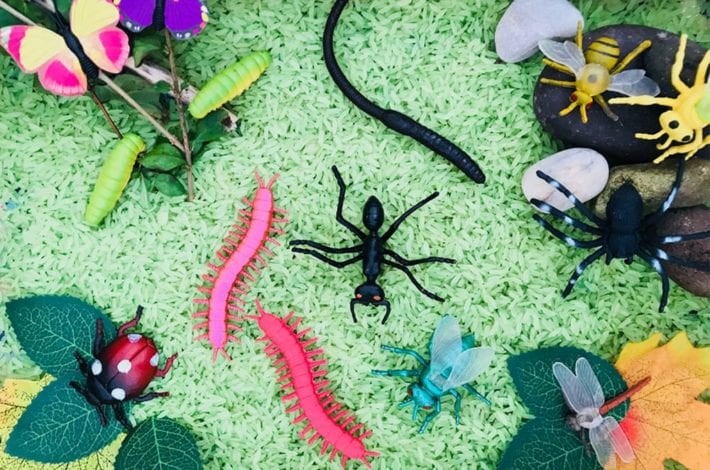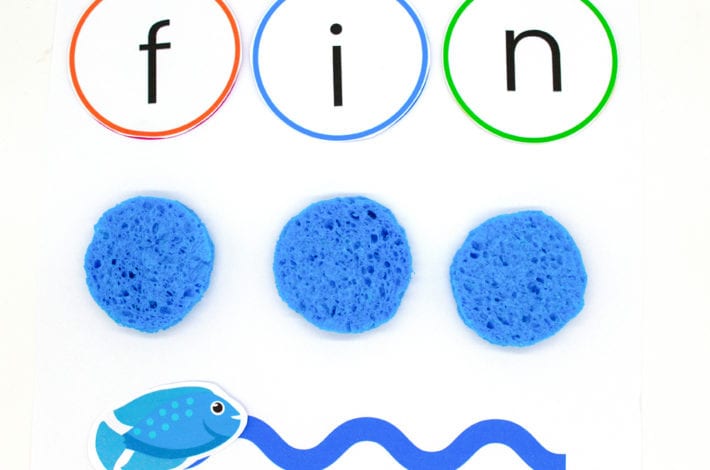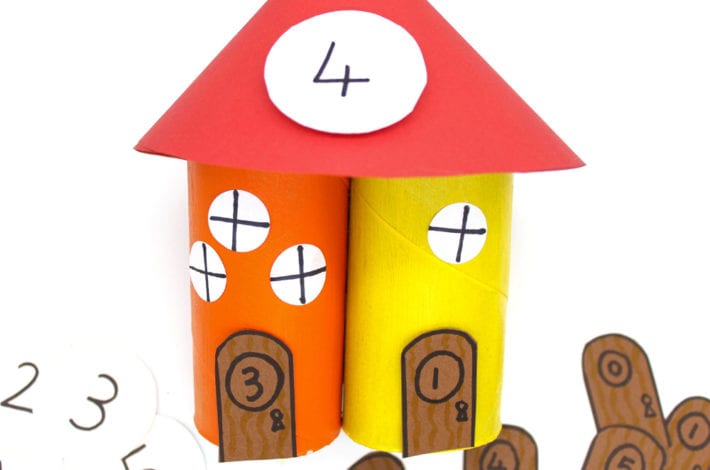

Playtime Learning
Where do Minibeasts Live? Learning Activity
Children are fascinated by the world of little creatures so much smaller than themselves. They can spot them in the garden or park whenever they go out.
This fun sorting game – Where do minibeasts live? – helps your child begin to learn about where different bugs live and why.
As you play this learning game with your child you can also tell them some fascinating mini beast facts. We’ve included a few here below too!
Summary:
Time: 10 minutes
Ages: Little kids to Big kids
Difficulty to make: Easy peasy
Skills: Learning about minibeasts’ habitats
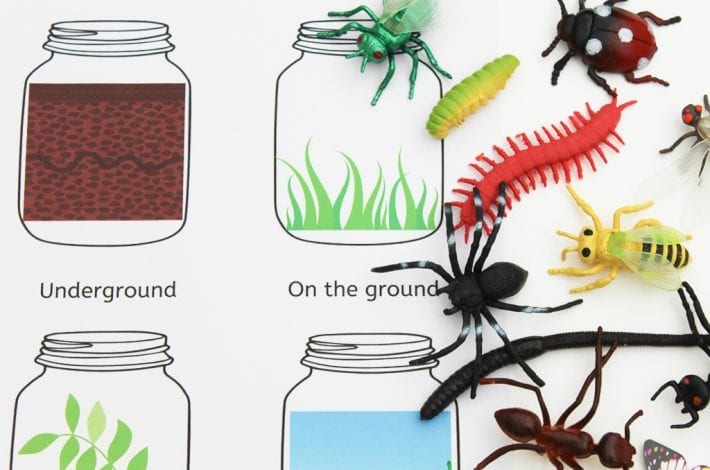

You will need:
- FREE printable worksheet: Where do insects live?
- Selection of toy insects
If you don’t have any there are a few selections available on Amazon:

 Plastic Insects – 16 Piece Bag
Plastic Insects – 16 Piece Bag
Amazon link: amzn.to/39c7s3w
- Bag of 16 insects
- 2 inches long colourful plastic insects
Step 1: Talk about minibeasts with your child
You can start the activity by exploring the different minibeasts with your child.
You could show them your plastic insect toys and talk about each one. What is it called? How does it move?
Books are also a great way to introduce a large variety of insects. We love this one below which has 30 flaps to make learning about bugs interactive and fun.
 Little Explorers: Bugs
Little Explorers: Bugs
Amazon link: amzn.to/2Pvf1un
An interactive lift-the-flap book about all things bugs.
You could also head out to the garden or the park to see which real life minibeasts you can find.
Can your child peer into the grass, or look under a rock to see what they can find?
They have even made these amazing Outdoor Bug Catcher kits if you wanted to go all out on your minibeast adventures:
 Expert Bug Catcher Kit
Expert Bug Catcher Kit
Amazon link: amzn.to/39mD6LX
Ideal for 3-12 year olds.
Binoculars, compass, magnifying glass, bug catching net…all you need for outdoor explorations and bug catching expeditions.
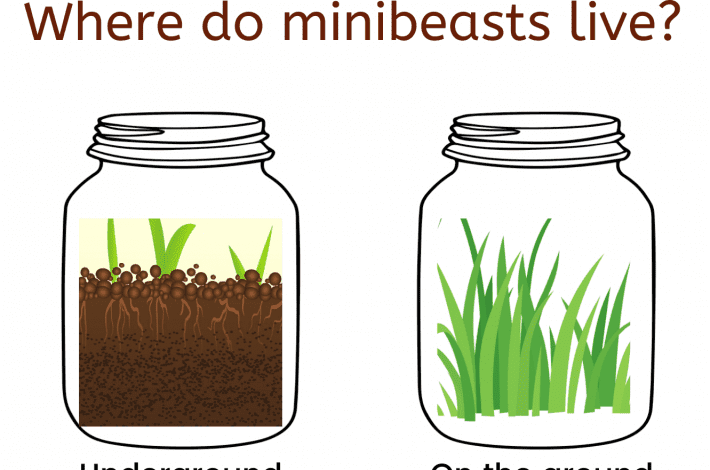

Step 2: Download this FREE minibeast worksheet
First download and print out the FREE printable worksheet: Where do insects live?
It includes 4 different insect habitats or insect types:
- Underground
- On the ground
- Above the ground
- Flying minibeasts
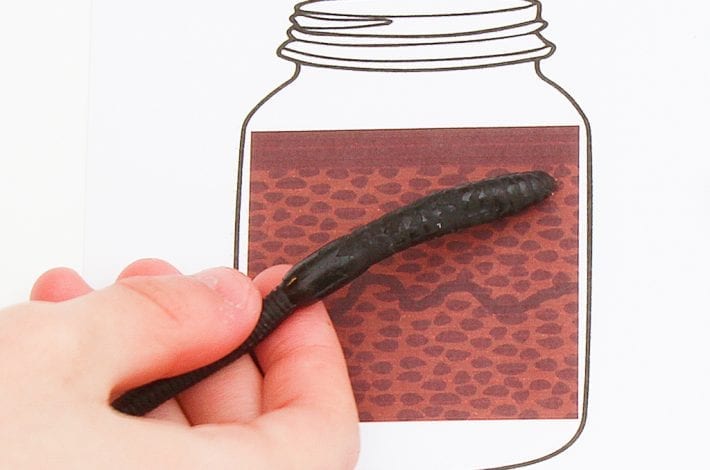

Step 3: Choose and sort some plastic insects
Choose a selection of plastic bugs and set them out on the table.
Ask your child to pick up one minibeast and think about where it might live.
Does it live underground, in the soil?
Have they seen it walking along the grass or crawling on leaves or trees?
Does the insect have wings and like to fly in the sky?
Place it on the jar which shows where the insect lives.
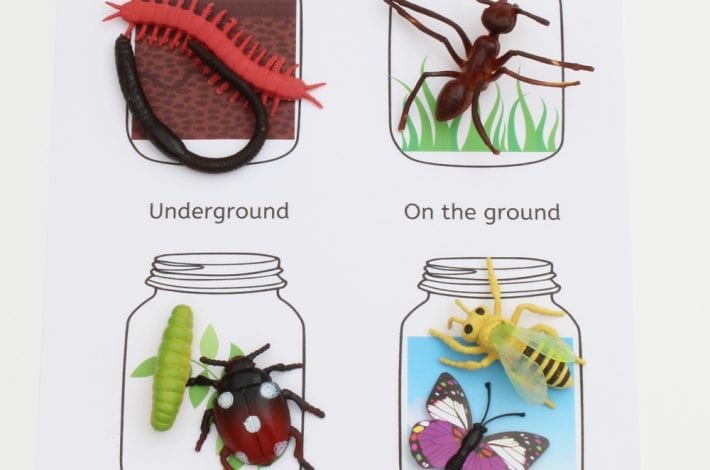

Step 4: Find homes for all the mini beasts
Keep choosing different bugs and talk about where they live.
Where has your child seen them in the garden?
Can they put them in the right place on the worksheet?
Some might spend time in more than one habitat so you can talk about this as well. Where do you see them the most?
For example spiders often crawl along the ground but then hide underground behind stones or in dark corners.
You can sometimes find ladybirds crawling along the grass but more often you’ll find them on the leaves of plants.
Their bodies are made up of wings, which can spread out and let them fly. So sometimes they can fly in the sky too.
Talk about where the minibeasts live and where else they might go.
Learn fascinating facts about insects
As you play this minibeast learning game you could share all sorts of interesting insect facts with your child.
Here are some fascinating minbeast facts you might like:
Marvellous minibeast knowledge
- There are between 6 and 10 million types of insects in the world.
- Insect bodies have 3 parts – the head, the abdomen and the body (thorax).
- Insects have 3 pairs of legs. So they have 6 legs in total.
- Insects have two antennae (feelers).
- Insects don’t have bones or a backbone like us. Instead they often have hard shells to protect them on the outside instead.
- Insects that have no bones on the inside are called invertebrates.
- Most insects can fly.
- Most insects hatch from eggs.
- Baby insects are called larva.
- Spiders are not insects. They have 8 legs. They are arachnids.
Fun minibeast facts. Did you know that…
- Ladybirds eat more than 5000 tiny bugs in their lifetime.
- Caterpillars have 12 eyes.
- Butterflies taste with their feet.
- Honey bees like to dance. It’s how they tell other bees useful information, like – ‘Hey – there’s food nearby’.
- A slug has four noses.
- Garden worms have 5 pairs of hearts.
- A snail can sleep for 3 years straight.
- Most insects only live for a year. Some only live for a day.
- A worm has no arms, legs or eyes.
This fun and hands on minibeast learning activity will help your child learn about these tiny creatures. They’ll learn the names of different insects and where they live.
And they can pick up all sorts of fascinating mini beast facts along the way.
This post may contain some affiliate links. This means that if you click to make a purchase that we may earn a small commission at no extra cost to you.




